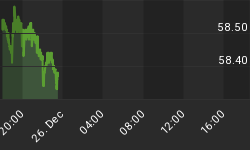LET'S LOOK AT THE S&P 500 DAILY CHART

The index found low at 90 calendar days low to low. This leaves some definite probabilities. As we discussed two weeks ago this retracement was a wave 4 and now the index is in the final wave 5 advance for this leg up. So we need to keep a few things in mind. Markets tend to exhaust into tops or even just high points within a trend. So the last thing one should do is be short too early or exit longs too early. And since the retracement for the correction was only ¼of the advance, this could be the "normal" fast move up to exhaust the trend.
Moving 90 days low to low offers the probability the high will be an advance of 30 to 33 calendar days or out to the first week in January (always a good time to look for top). Then 45 calendar days out to the 13th of January. One of the highest probabilities for a last leg is 60 to 67 calendar days which is 29 January through 4 February. Or another 90 calendar days out to the preferred cycle date of first week in March. It is possible to hit the high in January and trade "on the side" until March. There is usually a significant amount of distribution before a trend can change. The length of that distribution will be determined by the nature of the last leg up. But that again, could run until March.
LET'S LOOK AT THE FTSE 100

The index came down to the 1/3 to 3/8 level of retracement which is the normal retracement in a bull trend. So a new high is likely and could run to a 1/8 extension of the move up since the July low. The timing seems clear now the high was 72 calendar days from the 25 August low and the last low was 96 days from that same low. This presents a probability of running out to 144 days from low or out to around the 16th of January. There is the 180 day time period near the 1st of January but this 144 cycle has been dominant in this index very often so that may be the scenario here. The highest probability now looks like the 1/8 extension to 6042 for the top around the 16th of January.















